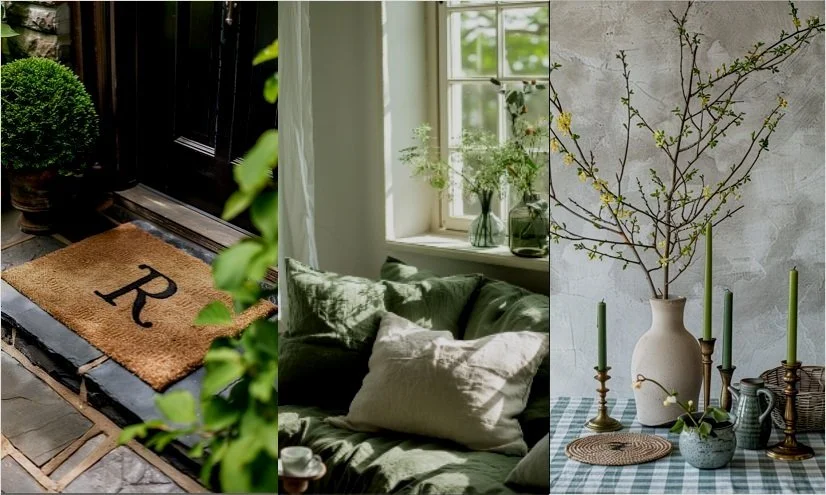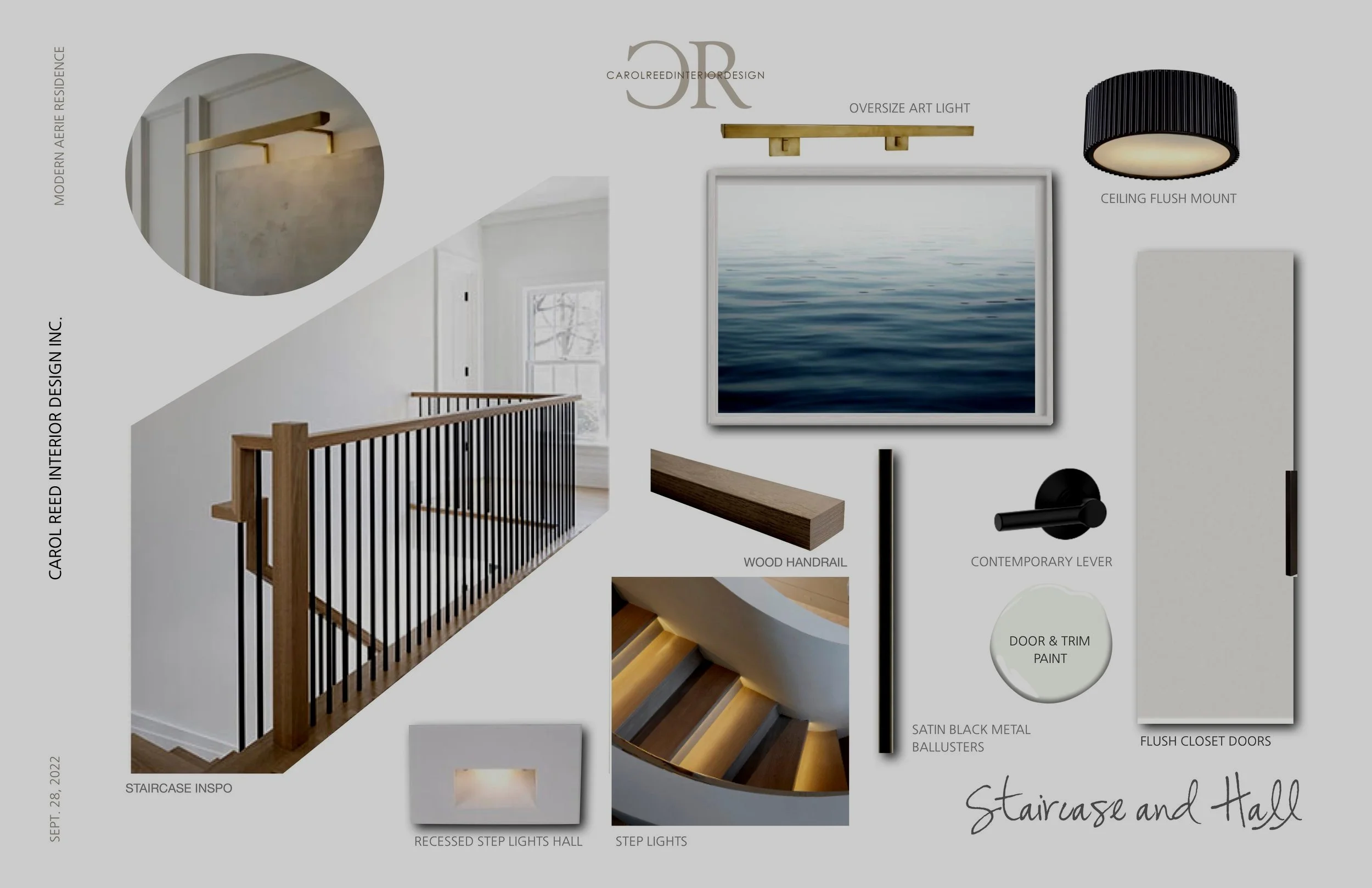Last week on Canada Day I made an impromtu visit to the
McMichael Gallery in Kleinburg, just north of Toronto. You can read about the inspiration for this visit
here. I love to visit art galleries of any kind and I'm a particular fan of Canadian art so it was a wonderful way to spend Canada Day afternoon. This past May marked the 90th anniversary of the Gallery's Group of Seven Collection and to celebrate this, they re-designed the exhibit and rehung pieces from their permanent collection and added some rare pieces from private collections. The new exhibit is called The Group of Seven: Revelations and Changing Perspectives. What impressed me most about the gallery on this visit (aside from the masterpieces!) was the wall colours - as you walked from gallery to gallery throughout the exhibit the wall colours changed with each series of collections. The walls had all been freshly painted just prior to the opening of the exhibit this past May in a wide range of colours from deep rich jewel tones to light watery greens and blues, to neutral taupes.
Salon style exhibit of Canadian historical works.
Upon entering the exhibit galleries you're greeted by this powerful and dramatic long wall of 19th century Europoen inspired landscapes and portraits arranged salon style on a deep teal coloured wall. I've always loved artwork hung in this manner there's something about it that just draws you in and captivates you and even though there's an abundance of art on the wall the individual pieces aren't lost - somehow the mass arrangement makes you want to stop and look at every single one like its part of a story. In the same manner there might be some pieces that on their own aren't to your liking but when they're hung collectively like this you have an appreciation for all of them.

Here's a couple of similar paint colours from Benjamin Moore,,,I'm not crazy for teal because I have not so fond memories of it from the 80's (!!!), these are a slightly bluer version of teal than the wall colour the gallery used. (I inquired about the paint colours but no one was able to provide them to me on that day and I havn't yet received any follow-up response yet so these are just my own interpretation.)

I often come across articles with tips on how to hang a gallery or salon style wall and I've read all kinds of different 'rules' many of them contradictory, regarding the spacing, the framing and the subject matter. But the only consistent thing I've noticed about my favorite salon walls is that there really is no rhyme or reason to the hanging. As I stood back and studied this wall, again I couldn't detect any overall consistent spacing but I did notice there was a definite 'invisible' horizontal border at the top and bottom of the wall which all the painting where hung within (looked to be about a foot below the crown moulding and about 2 feet above the floor). Also all the pieces were all paintings from the same era and all were in gold toned antique style frames. So I think these consistencies added to the powerful impact but I could easily envision varying works of art and frames incorporated in this hanging and I think the result would be just as effective. My two favorite pieces on this wall are seen in the photo above, the beach scene in the top left and the smaller beach scene on the bottom right - romantic summertime images I can imagine in a room full of white linen, nautical stripes, sisal, wicker and painted furniture, they're simply gorgeous and not something most people would typically associate with Canadian art.
I will always be a fan of the traditional rugged landscapes that are symbolic of the Group of Seven's work, but what I really enjoyed about this exhibit were the paintings that are so different and in such contrast from those iconic images. My favorites included many of the colourful still life flowers and portraits that I would love to design a room around!
Arthur Lismer, Summertime c.1918. Oil on Canvas.
This painting reminded me of the two beach scenes on the salon wall. Soft, pastel and beachy.
AY Jackson, Dahlias 1913. Oil on board.
This painting just grabbed my eye, it literally popped off the wall. The wall it was hanging on was painted in a browny/plum colour similar to below.
There were a lot of purpley taupes and plum/browns used. The paint colours don't translate accurately on the computer but looking at the fan deck Benjamin Moore's Driftwood colour is similar to what the Gallery used based on my memory. The other two colours are my own picks for a deeper taupe.
F.H. Varley, Girl in Red c.1920-22. Oil on Canvas.
Portraits have always been a favorite of mine, the colours of this one are stunning. This was hung on a purpley/red painted wall similar to the paint colour below. This would be a gorgeous colour to display artwork in a dining room or cozy den.
Going by memory this colour in person was a purply red but a bit on the brown side. I managed to get a photo and its looks quite brown in the image below but I remember being more purple than brown. I selected a few similar colours from Benjamin Moore above. My least favorite colours are dark purples and burgundies so I don't tend to use a lot of these colours, I have used Amazon Soil and its a very livable earthy purple which was a beautiful backdrop for artwork.
wall colour was more purpley than brown as it appears in this photo.
Edwin Holgate, The Cellist c.1923. Oil on Canvas.
This was so dramatic hung on the same dark red/purple wall as the portrait above.
J.E.H. MacDonald, Thomson's Rapids, Magnetawan River, c.1910. Oil on Paperboard.
There were a series of landscapes hung on a deep navy blue, one of my favorite wall colours in the gallery. The look would be similar to these paint colours I've selected below....
Beautiful deep blues from Benjamin Moore any of these would provide a classic backdrop for artwork.
My favorite wall colours in the gallery for displaying the artwork were definitely the deeper richer tones. To my eye these colours made the paintings pop and truly highlighted them. I'm not one for using these really deep colours throughout an entire house, they can be heavy and moody, but if you have a definitive accent wall or a seperate room they're beautifully suited to dining rooms, library/dens or powder rooms where they can be dramatic and cozy.

Of course I love the look of classic gallery white walls, but my next personal favorite is a deep grey or black for displaying artwork. On the second floor where the Inuit art exhibits were there was a beautiful black wall that looked stunning as a backdrop to glass display cases and there was a brighter less brown red. Benjamin Moore's Black Beauty is a black I've used several times, Kendall Charcoal was my own bedroom colour for years and I loved it (Chelsea Grey is another fave),,,and Northern Fire is an orangey red that I find more cheery and fresh than darker browner reds.
My least favorite colours were the lighter wall colours they used in the gallery ranging from light sky blue, soft watery greens, taupe and mossy green. I found that the paintings seemed dull and bland when displayed on these colours, maybe because so much of these tones were in the paintings themselves or maybe because the frames were painted in muted tones? With light coloured and neutral walls I think artwork with lots of white, like black and white photographs with white mats, or white line drawings work really well because they look very crisp on these backgrounds, especially in metal or black frames.

If you haven't visited the gallery before its a great way to spend an afternoon, they have beautiful grounds with lots of picnic tables if you'd like to pack a lunch. If you're looking for something to do with the kids this summer the gallery offers lots of children's day camp programs and art classes, (including spin art!) the kids can learn something new while having lots of fun and you can take home some masterpieces of your own to hang on the walls!
























































